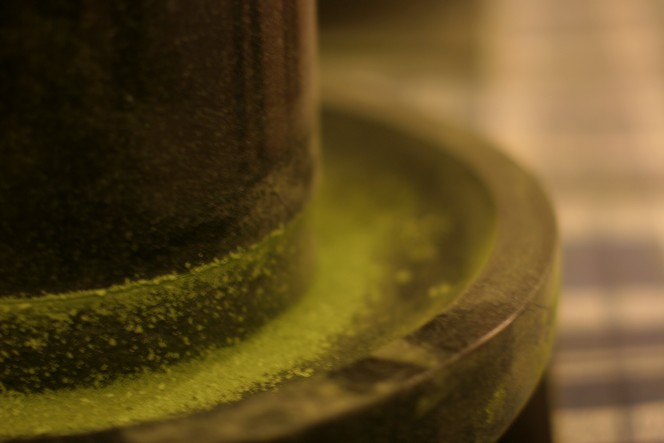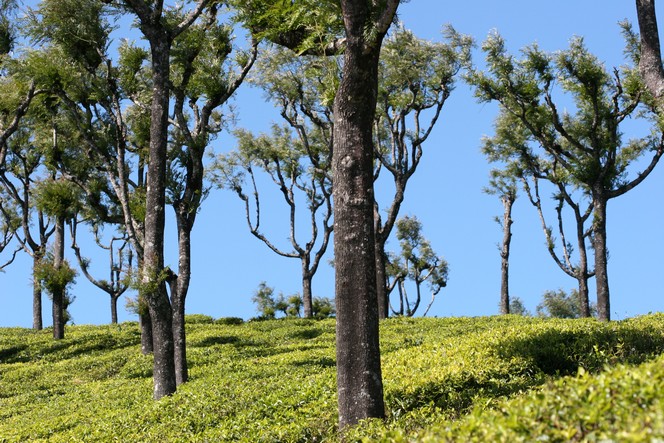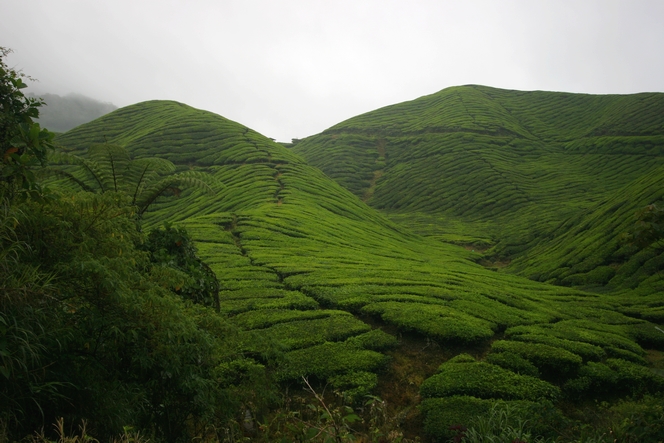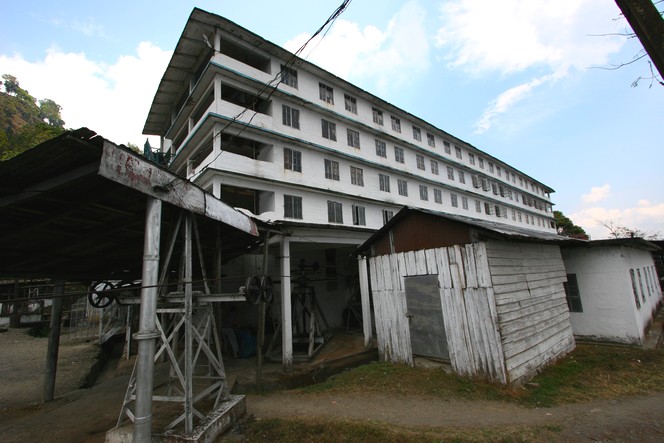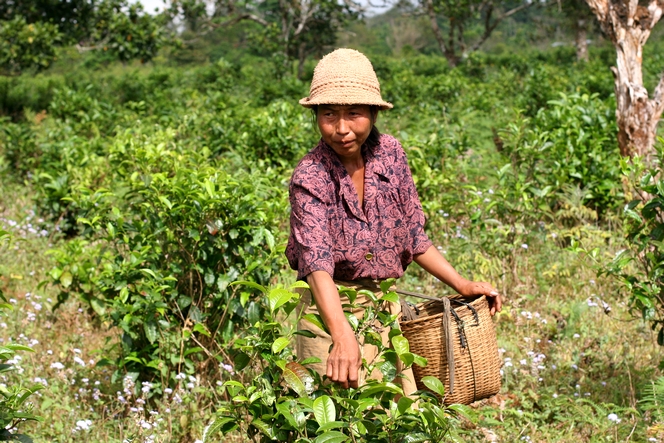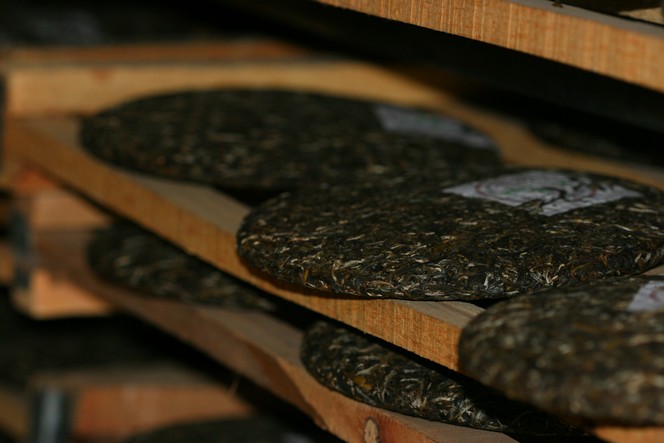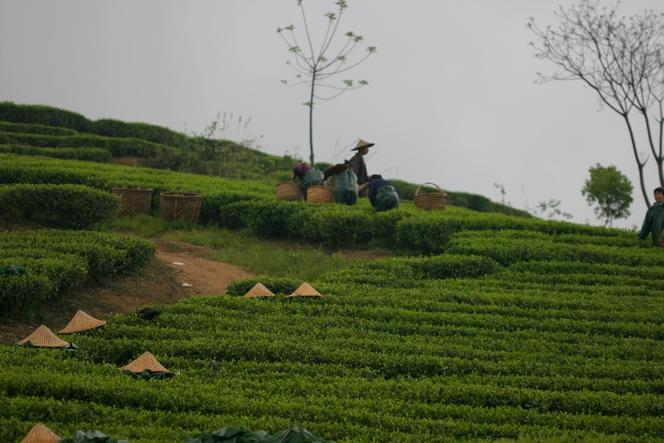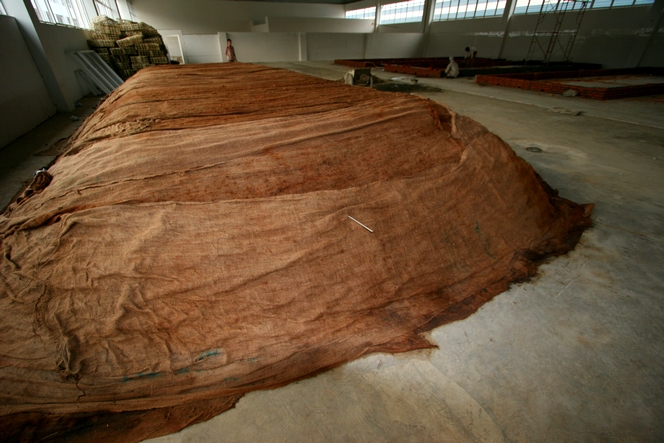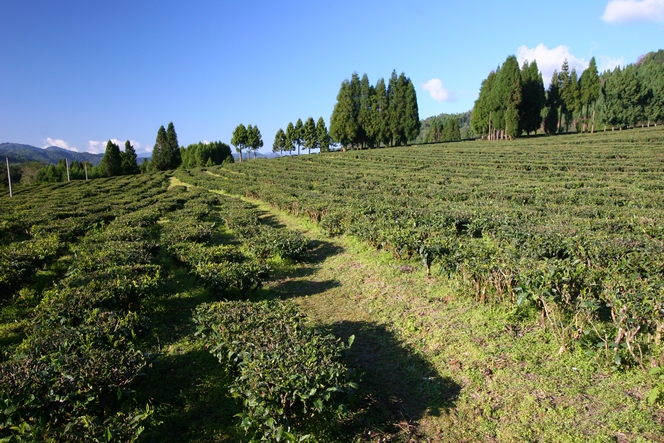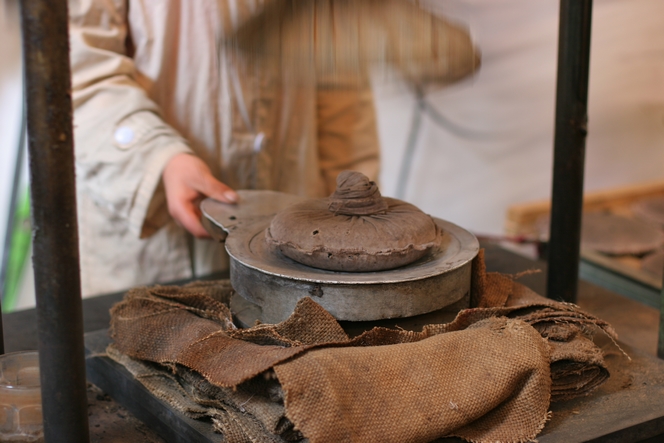In Japan, a special tea is served during the Cha No Yu, the famous tea ceremony. It is called Matcha.
Matcha differs in appearance from other Japanese teas in that it is ground into a powder. In any other tea-producing country, tea that comes in broken leaf or dust form would be a sign of poor quality, but in Japan, Matcha is one of the most renowned teas due to its high quality. It comes from a shade-grown variety of plant called Tencha. The tea leaves are ground in a stone mill which is filled from the top. The result is this very fine powder which, as you can see from my photo, collects around the edge of the two stones that rotate across each other and push the tea to the outside.

